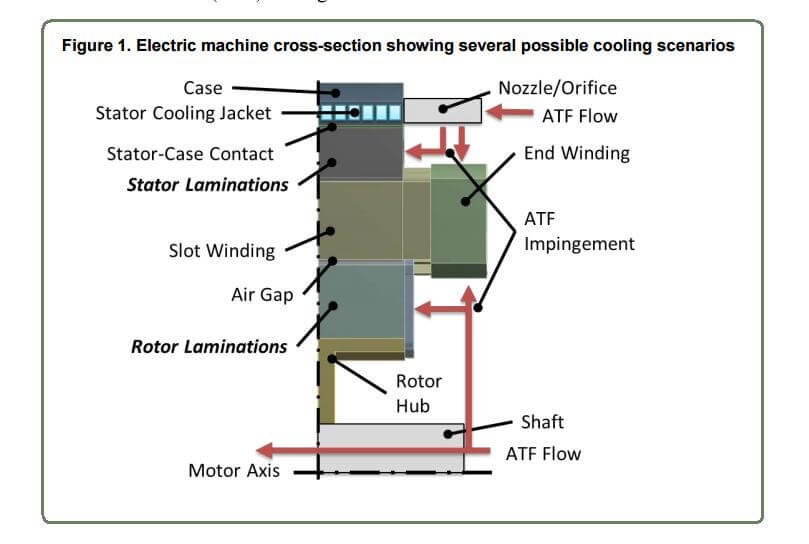
The ability to remove heat from an electric machine depends on the passive stack thermal resistances within the machine and the convective cooling performance of the selected cooling technology.
NREL researchers prepared and compiled data on the properties of stacked lamination materials commonly used in electric machines such as generators and motors. The resulting test methods and specialized data—of particular interest to electric machine designers—have been shared with industry and university researchers to support improved motor designs. Although the research focused on electric machines for electric-drive vehicle applications, the results are applicable to any electric machine where low thermal resistance and efficient heat removal are important for increasing machine performance and power density.
The finding’s executive summary
The ability to remove heat from an electric machine depends on the passive stack thermal resistances within the machine and the convective cooling performance of the selected cooling technology. This report focuses on the passive thermal design, specifically properties of the stator and rotor lamination stacks. Orthotropic thermal conductivity, specific heat, and density are reported. Four materials commonly used in electric machines were tested, including M19 (29 and 26 gauge), HF10, and Arnon 7 materials. All measurements for effective through-stack thermal conductivity used a custom-built setup at the National Renewable Energy Laboratory built in accordance with ASTM International Standard D5470-12 for measuring direction-dependent thermal conductivity of materials.
Lamination properties were measured along the plane of the laminations and perpendicular to the laminations or through a stack of laminations. For measurement of through-stack thermal conductivity, data from different stack heights were measured and fitted to a weighted curve fit. This method allowed a measurement of bulk thermal conductivity independent of stack thickness and interface resistances within the test setup. Bulk thermal conductivity, specific heat, and density were tested using commercially available equipment. Lamination-to-lamination contact resistance is a key factor in the effective through-stack thermal conductivity. Clamping pressure and surface finish affect the thermal contact resistance.
The thickness of laminations can also influence effective through-stack thermal conductivity. Effective material property results for the four materials are summarized, including 95% confidence intervals. Property data are provided to aid in development of steady state and transient thermal finite element analysis models for electric machines. Information and equations used to calculate through-stack thermal conductivity are also provided. The work fills a current need for material property data specific to electric machine design that currently does not exist in public literature. Although this report focuses on electric machines for electric-drive vehicle applications, the results are applicable to any electric machine where low thermal resistance and efficient heat removal are important to increasing machine performance and power density.
Filed Under: News




